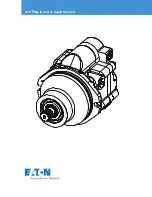
Step II
Faulty acceleration with hiccups and a tendency to cut out is usually attributable to a poor fuel
mixture in the medium-revolutions range. Stop the engine and recheck the fuel feed (the hose-pipe must not
be pinched or broken; if fitted, check also the fuel filter permeability). Restart the engine and test
acceleration again. If problems persist adjust the carburetor. Open the adjusting needle L by 5 min and
retest acceleration. If acceleration is smooth, open the needle by another 3-5 min - this should be done
because the needle was previously set at a boundary value; if atmospheric conditions changed during flight,
the problems might recur.
If the engine continues to not accelerate properly open the low speed needle by 10 minutes. If
the engine’s operation does not improve, shut it off and check the basic setting. Set the adjusting needle L
at 1 turn and 50 min and the adjusting needle H at 1 turn and 10 min., restart the engine and test the
acceleration. If the engine runs correctly go to Step III. If it continues to not accelerate properly, open the
low speed needle by another 10 minutes. If acceleration is faulty, the defect is likely to lie somewhere other
than an adjustment.
Step III
If the engine accelerates correctly, according to the above test, set it at idle speed and accelerate
to full speed. Repeat twice more. If the engine functions correctly, go to Step IV. If it cuts out, open the L
needle by 5-10 minutes more.
If the engine does not respond to acceleration fast enough, keep closing the L needle until the
engine starts to cut out in response to throttle opening. At that point reopen the L nozzle by 5-10 minutes.
Step IV
If the engine reacts correctly set it at full speed. If revolutions do not drop, the engine has been
adjusted successfully. If revolutions seem to drop, open the adjusting needle H by about 5-10 minutes.
Caution!!! The engine must be stopped while you adjust the carburetor in order to prevent injury by the
propeller.
Starting and running in a new engine
Before you first start the engine, make sure that the plug is screwed in and tightened up and that the plug
socket is fitted in place and fastened down properly.
Fix the ignition sensor in proper position above the magnet with screws enclosed.
Unless the spark plug is inserted in plug socket, never turn the engine with ignition turned on. This
could lead to ignition damage!
1) Make sure that the ignition is switched off, the choke valve is closed and the throttle valve is about half
opened. Then give the engine 3-4 turns, provided that carburetor is not overflowing. If it is overflowing,
only give the engine 1-2 turns.
2) Switch the ignition on, close the choke valve, set the throttle at slightly higher idle speed and give the
engine a few quickly turns. If even after the fourth turn, with the choke valve closed, you do not hear a
suggestion of the engine starting, give the engine 2 turns following the instructions in paragraph 1 above.
Then proceed according to instructions given in paragraph 2.
3) If the engine does not start even after another set of turns open the choke valve and the throttle to
maximum and give the engine approx. 4 turns. Switch the ignition off and on again and restart the engine
with throttle turned slightly down and the choke valve set open.
4) If the engine still would not start, unscrew the plug and check its contacts. Clean any possible petrol
moisture (i.e. an indication of engine overflow) and screw it in again. Further starting should only be done
with the throttle turned down. If the plug is dry then probably not enough fuel has been drawn into the
carburetor. If that is the case, check the fuel feed and then return to the instructions given in paragraph 1.
Having started the engine, leave it running for about 5 minutes at a higher idle speed. Then run it in for
about 10 min, while changing revolutions from idle to 1/2-3/4 of the range and shortly holding each
position - gradually prolong the holding periods. After 10 minutes of operation, open the throttle at


























